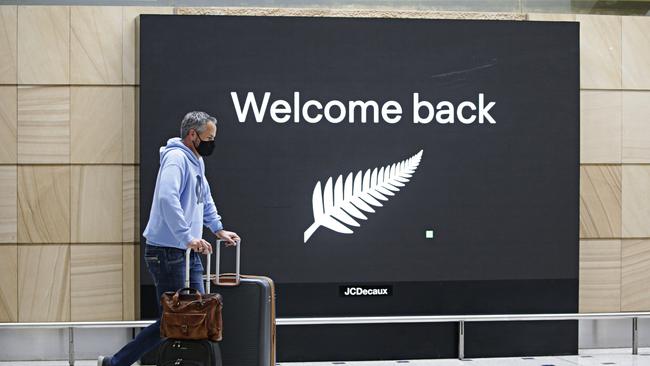Shock chart shows Australia’s job market in rapid decline
Australia’s job market is rapidly losing steam in the latest sign of a cooling economy, with every state recording a drastic drop in job opportunities and more people looking for work.
Business
Don't miss out on the headlines from Business. Followed categories will be added to My News.
Australia’s labour market is losing steam, with job ads falling in every state and territory in March - the latest sign of a cooling economy as the post-pandemic hiring surge fades.
Data from employment listings group Seek shows national job ad volumes dropped by 3 per cent in March – the sharpest fall since October, following a smaller dip in February.
Queensland led the decline, posting its sharpest monthly drop since the height of the pandemic of 6.9 per cent for the month after Cyclone Alfred battered the state’s southeast, while the ACT and Tasmania recorded falls of 4.8 and 2.6 per cent respectively.
Seek senior economist Dr Blair Chapman said the shift reflects a broader slowdown following the pandemic-era hiring surge.
“We just had an extraordinary jump with a bit of catch-up coming out of Covid and a very tight labour market,” Dr Chapman said.
“As that fades into the background, we are expecting it to return to that previous sort of flight upwards trend.”

“There’s still plenty of jobs out there. It’s just there’s not as many as there were, say, last year — and especially during Covid.”
In February, applications per job ad rose for the first time since October, increasing 2 per cent from the month prior and are now at their second highest level on record.
Not since 2020 have applications per job been this high, demonstrating the heightened level of competition among jobseekers.
“One of the bigger factors in the number of applicants is possibly multiple job holders and people looking for that second job. We’ve seen multiple job holding increasing over the last couple of years,” Dr Chapman said.
“There’s a little bit of a story around New Zealanders especially coming to Australia … for every one Australian that applies for a job in New Zealand, we see three New Zealanders apply for a job in Australia.”

The surge in New Zealand arrivals has added to labour market competition, particularly in entry-level and service roles, as more migrants seek work amid cost-of-living pressures and a sluggish Kiwi economy.
The latest data from the ABS showed 27,200 people arrived in Australia from New Zealand to live in December 2023.
Queensland recorded the sharpest monthly fall, with job ads dropping 6.9 per cent — the state’s worst result since April 2020.
Dr Chapman said Tropical Cyclone Alfred likely played a key role in that result, particularly across the southeast and tourism-heavy coastal regions.
“The Gold Coast and Sunshine Coast have big tourism industries, and we saw a big pullback in the hospitality and accommodation space in hiring in the month,” he said.
Queensland also posted large drops in healthcare, manufacturing and logistics job ads, though overall demand remains significantly higher than pre-pandemic levels.
“Queensland’s been slowing down more lately than it had been, but job ads there [are] still really elevated compared to a couple of years ago,” Dr Chapman said. “There’s still plenty of demand there relative to say pre-Covid.”

Every other state and territory also recorded month-on-month falls, including the ACT (-4.8 per cent), Tasmania (-2.6 per cent), New South Wales (-1.9 per cent) and Victoria (-1.7 per cent). The ACT saw a sharp year-on-year drop of 27.4 per cent, which Dr Chapman linked to the upcoming election.
“When you’re in caretaker mode, it’s much harder for government departments to be hiring and firing,” he said. “There’s a bit of a pause in Canberra at the moment.”
Sector-wise, healthcare, administration, engineering and hospitality recorded some of the largest monthly declines.

However, several industries — including insurance, call centres and mining — posted modest growth in job ad volumes.
Economists expect the jobless rate to edge up to 4.2 per cent in March when the data is released by the Australian Bureau of Statistics on Thursday, with participation lifting to 67 per cent and 40,000 new jobs created.
With inflation easing, attention is shifting to how far unemployment can rise without derailing the RBA’s disinflation progress — or stoking wage pressures.
The RBA estimates the non-accelerating-inflation rate of unemployment, or NAIRU, at 4.5 per cent, meaning joblessness below that level risks reigniting inflation.
More Coverage
Originally published as Shock chart shows Australia’s job market in rapid decline




